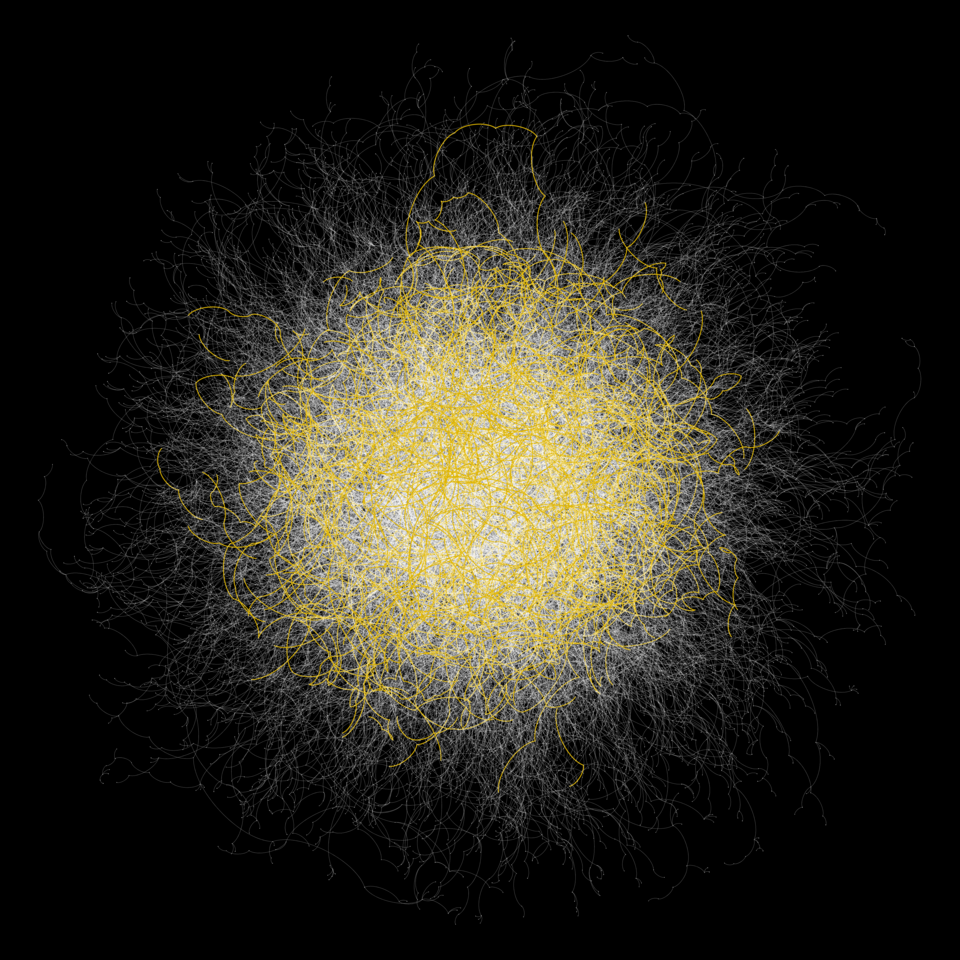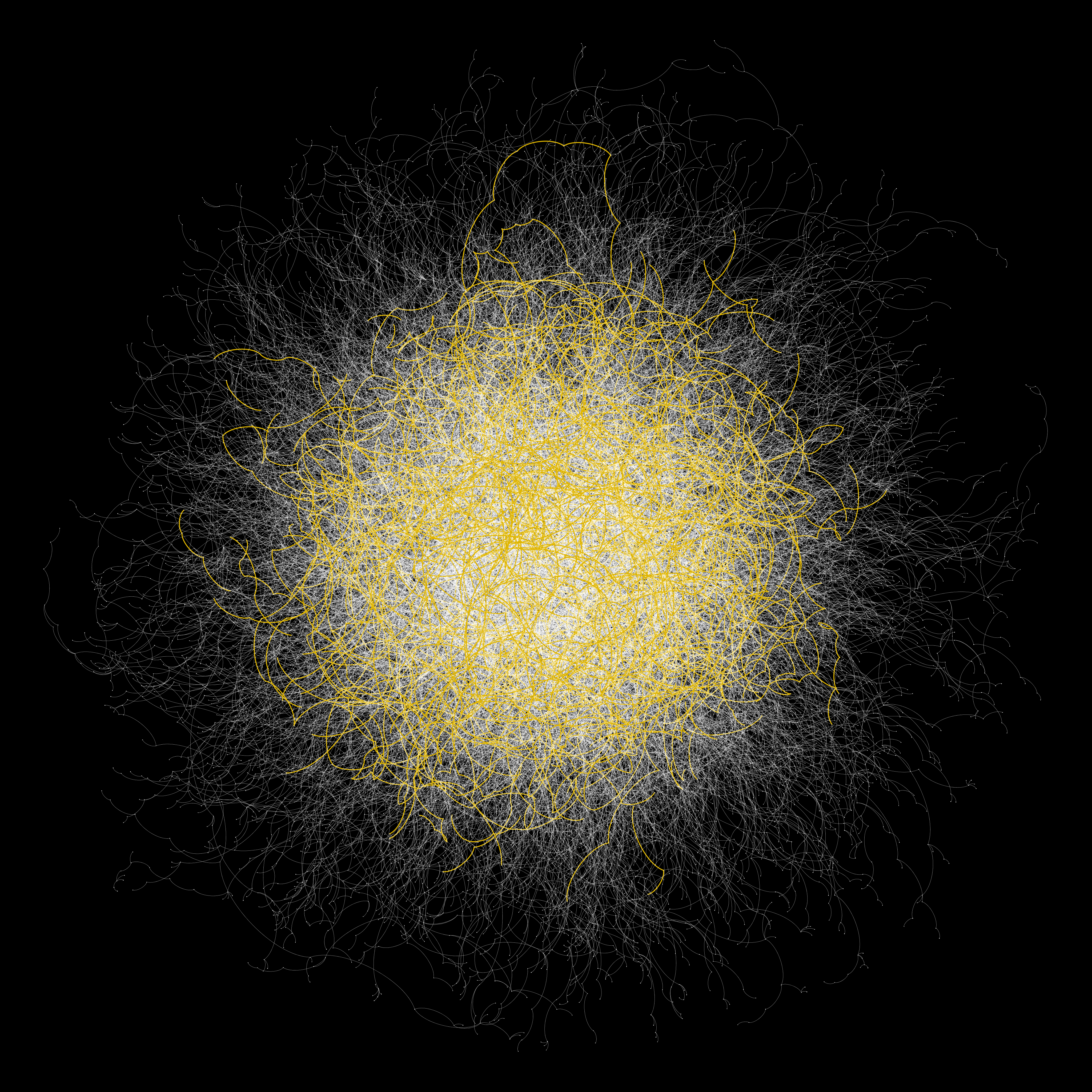Social bridges are more stable than you thought
Published in Social Sciences

Think about your friends and acquaintances. Who are the people you interact with the most? You probably would first think about your colleagues or people from your close friend circles. Of course, you interact a lot with them because you have many common acquaintances or need to attend the same event or project. But at the same time, you might also think of other people with whom you have interacted a lot, but you do not have many common friends or social circles.

From a social network perspective, the latter type of social ties is called “long ties.” The figure above provides an illustration of how we determine a social tie is a long tie – when the tie is cut, how many hops should we travel from one node to the other? If the alternative path is long enough (say we need to pass more than five nodes), we refer to it as a long tie. Long ties are considered incredibly essential for diffusing novel information across different communities, and are referred to as “social bridges.” The graph below is a nationwide network with long ties marked yellow.

The existence of long ties creates a “puzzle” for understanding social networks. We tend to believe that long ties should have few interactions, or should be “weak” based on the weak tie hypothesis [1]. However, a recent study shows that in several social networks, those long ties unexpectedly have the same level of interaction frequency as other social ties that share a lot of common friends [2].
This study published in Nature Communications Physics focuses on studying the dynamics of long ties, which aims to further explain the mechanisms of long tie formation and evolution. Using two-year social network data, this study finds that in the long run, long ties appear to have more interactions even than social ties in cohesive embedded networks, which are presumably your close friends and colleagues you meet daily. Moreover, this study also shows that long ties have a long lifespan – given that two individuals are linked by a long tie, they will likely maintain their long tie for a long time.
These two empirical results are not what previous network theories or models predicted. First, the weak tie hypothesis implies that long ties should be “weak” (with low interaction frequency or intensity), but we find that they can be even stronger than any other social ties. Second, the famous triadic closure property in social networks implies that long ties should not be a stable structure – once two individuals have many interactions, one may introduce the other to a third friend, which means an open triad is now closed and the tie is no longer a long tie.
To explain these findings, this paper establishes a computational model that simulates the dynamics of social networks. Inspired by [3], the model combines the embedding techniques in machine learning and the strategic network formation in economics. The design of these benefit terms was intended for our "valuable long tie hypothesis" -- we hope to observe that long ties have, on average, larger values in the direct benefit term. The results from our learning model suggest that long ties are highly beneficial, which instinctively motivates people to expend extra effort to maintain them.
What is the takeaway? Contrary to the prediction by the prior theory that long ties are an unstable status, this study shows that they are actually very persistent and may get even stronger over time. The model explains that it is the benefit of social exchange that drives this stability.
References
[1] Granovetter, Mark S. "The strength of weak ties." American journal of sociology 78.6 (1973): 1360-1380.
[2] Park, Patrick S., Joshua E. Blumenstock, and Michael W. Macy. "The strength of long-range ties in population-scale social networks." Science 362.6421 (2018): 1410-1413.
[3] Yuan, Yuan, Ahmad Alabdulkareem, and Alex Sandy Pentland. "An interpretable approach for social network formation among heterogeneous agents." Nature communications 9.1 (2018): 1-9.
Follow the Topic
-
Communications Physics

An open access journal from Nature Portfolio publishing high-quality research, reviews and commentary in all areas of the physical sciences.
Related Collections
With Collections, you can get published faster and increase your visibility.
Higher-order interaction networks 2024
Publishing Model: Open Access
Deadline: Feb 28, 2026
Non-Markovian quantum dynamics in physical systems: description and control
Publishing Model: Open Access
Deadline: Dec 31, 2025




Please sign in or register for FREE
If you are a registered user on Research Communities by Springer Nature, please sign in